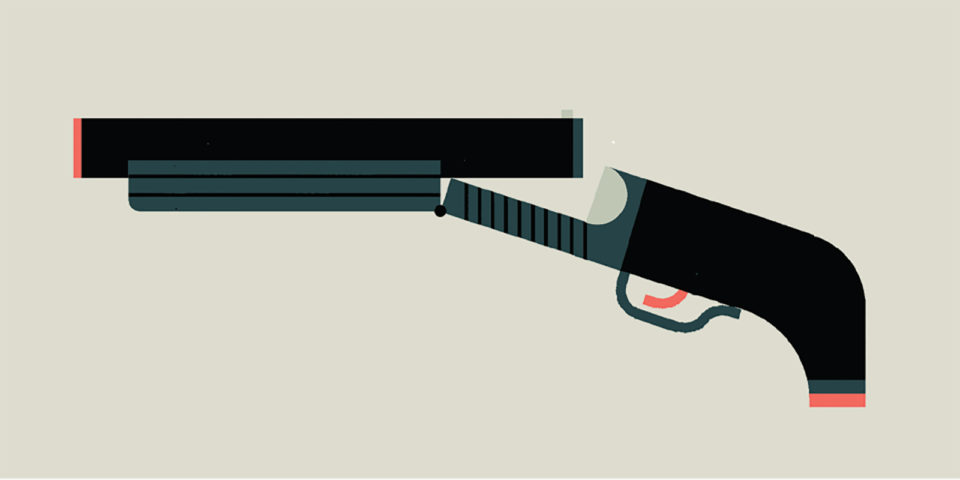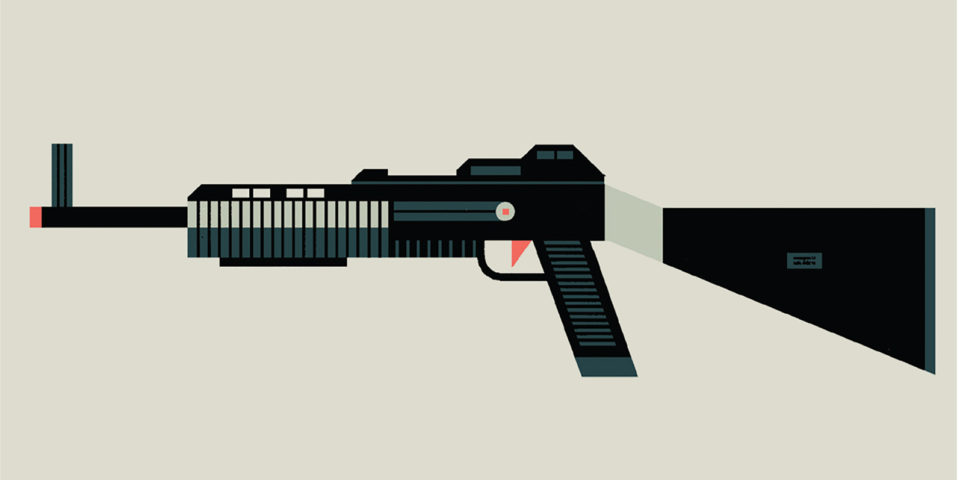Evolving Arsenals
A look at the changing weaponry of school shooters.
|Over the past 35-plus years, mass killers in America have heavily favored semi-automatic handguns. However, in six of the 10 deadliest attacks going back to the 1960s, the gunmen used semi-automatic rifles. At Columbine, the shooters employed an array of arms. In many cases, firearms used in mass casualty situations have been obtained legally, leading to debates about the ease with which Americans can purchase guns.
Savage 67H 12-Gauge Pump-Action Shotgun

The Columbine shooters sawed off the barrel of this relatively inexpensive weapon—typically used for home defense or hunting—to roughly 26 inches, making it easier to wield and more deadly because the projectiles scatter more widely. The killers also carried a Savage 311D 12-gauge shotgun, sawed off to 23 inches.
Intratec Handgun

The paramilitary-esque TEC-DC9, which uses 9 mm ammo and has a 32-round magazine, was one of 19 listed on the 1994 federal assault weapons ban, which sunset in 2004. However, it was legal to own and sell pre-existing weapons during that time. The underage Columbine killers secured their TEC-DC9 handgun illegally, for $500, from a friend who had purchased it legally at the Tanner Gun Show in Adams County.
AR-15-Style Rifle

Like most rifles, these long guns—employing larger ammo and high-velocity firepower—obliterate the human body in ways that handguns often don’t. Although they do not have fully automatic capabilities like their military cousins, the military aesthetic is an undeniable attractant for AR enthusiasts. The AR platform is also popular for its modularity, which allows aficionados to tinker with and accessorize existing weapons or assemble them from individual parts. AR-15-style rifles were employed at Sandy Hook Elementary School and Marjory Stoneman Douglas High School.
Hi-Point Carbine

This rifle ended up in the hands of the Columbine shooters after they asked an older friend to buy it for them at the Tanner Gun Show. Because the sale was made by a private seller at the show, though, the 17-year-old killers could have legally purchased the weapon without help: At that time in Colorado, minors were prohibited from buying handguns, but not long guns (e.g., rifles and shotguns), so long as they bought the guns from a private seller. The scenario was described as an example of the gun show loophole in the aftermath of the shooting, but experts say the fact that the sale happened at a gun show was irrelevant; private sales of this kind, sans paperwork, were legal.
High-Capacity Magazines

Until the 1980s, the most common handgun in America was a revolver, which typically held five or six rounds. Semi-automatic handguns with larger capacities have been available to the public since the early to mid-20th century, but they became more popular in the latter decades of the century. In 2013—following the mass shootings in Newtown, Connecticut, and at the Century 16 movie theater in Aurora—Colorado legislators passed a ban on magazines larger than 15 rounds. At press time, only nine other states and the District of Columbia had similar measures.
Glock Pistol

Glocks, like most semi-automatic handguns, are capable of rapid fire and compatible with magazines of varying sizes. Glocks are known to be lightweight and easy to operate, and they come in many varieties. They have been used in myriad mass shootings. The Virginia Tech shooter used a Glock 19 (and a .22-caliber Walther P22) to kill 32 and wound at least 23 others; his choice of 9 mm hollow-point ammunition—which expands upon impact—likely contributed to the seriousness of the injuries.
This story is part of 5280 Magazine’s special issue dedicated to the 20th anniversary of Columbine. Read more about the project here.

NEXT: Law & Disorder
Tracking more than a quarter century of high-profile school shootings and the legislative efforts to curb the violence.
